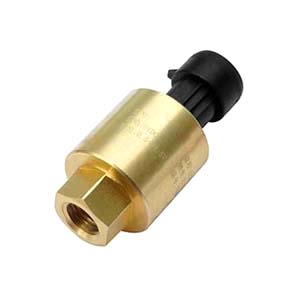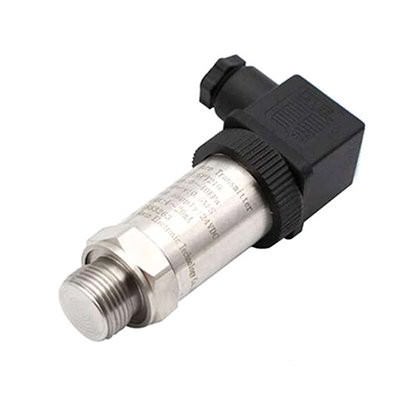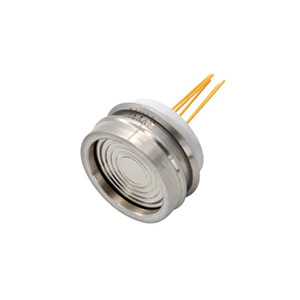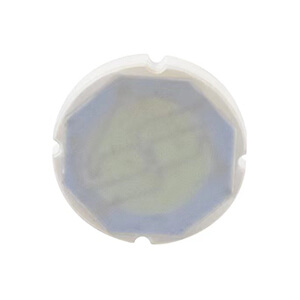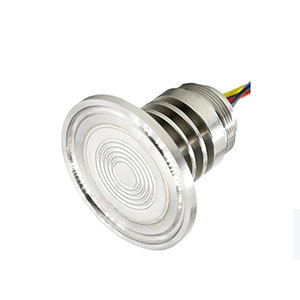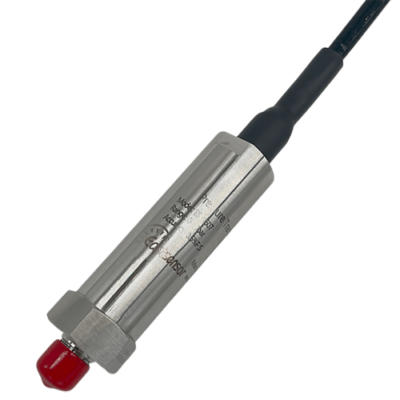What is liquid pressure sensor?
A liquid pressure sensor is a device used to measure the pressure exerted by a liquid in a specific environment or system. These sensors are crucial for various applications, including fluid control systems, liquid storage, monitoring, and industrial processes involving liquids.
Like other pressure sensors (gas pressure senor, water pressure sensor, air pressure sensor), liquid pressure sensors work by converting the pressure exerted by a liquid into an electrical signal that can be measured and analyzed. They can be designed for various types of liquids, such as water, oil, or chemicals, depending on the application requirements.
There are several technologies used in liquid pressure sensors, including piezoresistive, capacitive, resonant, and optical sensors, each with its own advantages and limitations. When selecting a liquid pressure sensor, it’s important to consider factors like pressure range, accuracy, media compatibility, temperature range, output signal, installation requirements, environmental factors, and cost. The best choice depends on the specific application and requirements.
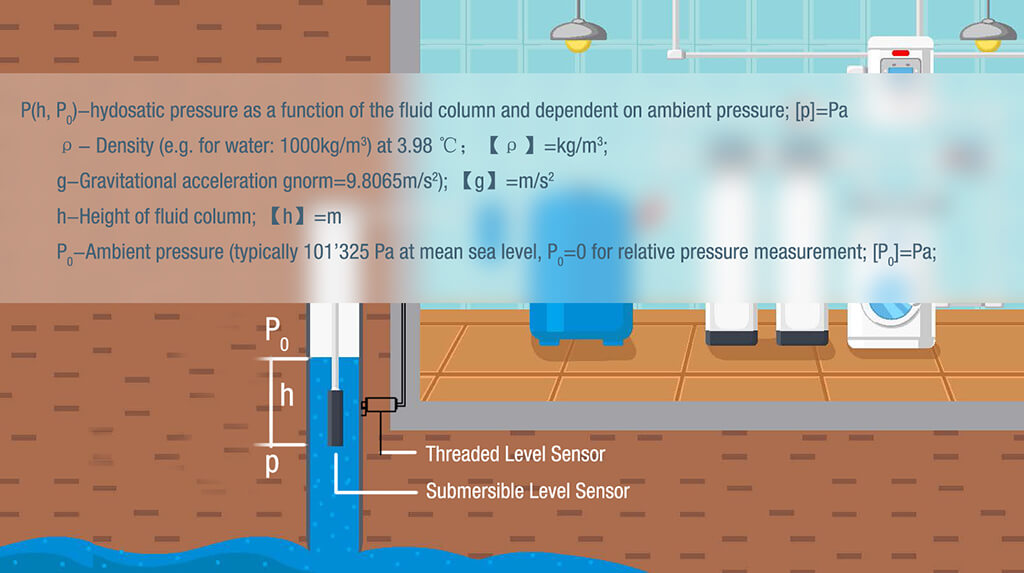
How liquid pressure sensor work?
There are several types of liquid pressure sensors, each using a different technology to measure pressure. Here are some of the most common ones:
Piezoresistive sensors:
These sensors consist of a diaphragm with embedded strain gauges (resistive elements). When pressure is applied to the diaphragm, it causes the strain gauges to deform, changing their electrical resistance. This change in resistance is proportional to the applied pressure and can be measured to determine the liquid pressure.
- Pros: Relatively low cost, good accuracy (±0.1% to ±2% FS), and suitable for a wide range of pressure and temperature conditions.
- Cons: Can be sensitive to temperature changes, which may affect accuracy; some designs may be susceptible to mechanical shock or vibration.
Capacitive sensors:
Capacitive sensors have two parallel conductive plates separated by a dielectric material. When pressure is applied, it causes the plates to move closer together, changing the capacitance between them. This change in capacitance is proportional to the applied pressure and can be measured to determine the liquid pressure.
- Pros: Good accuracy (±0.1% to ±1% FS), low power consumption, and relatively immune to temperature effects.
- Cons: May be sensitive to humidity or contamination; not suitable for high-pressure applications or corrosive liquids.
Resonant sensors:
These sensors use a pressure-sensitive element, such as a vibrating diaphragm or a quartz crystal, that changes its resonance frequency when pressure is applied. The liquid pressure can be determined by measuring the change in resonance frequency.
- Pros: High accuracy (±0.05% to ±0.1% FS), excellent long-term stability, and less sensitive to temperature changes.
- Cons: Generally, more expensive and complex, may not be suitable for all applications due to size or mounting constraints
Optical sensors:
Optical sensors measure pressure-induced changes in the properties of an optical element, such as the refractive index or the length of a fiber optic cable. These changes can be detected and measured to determine the liquid pressure.
- Pros: Resistant to electromagnetic interference, high accuracy (±0.1% to ±1% FS), and suitable for harsh environments or corrosive liquids.
- Cons: Can be more expensive and complex; may require additional components, such as light sources or detectors.
Each of these technologies has its advantages and limitations, and the best choice for a specific application depends on factors like pressure range, accuracy, media compatibility, temperature range, and environmental conditions.
What are the unique feature only Liquid sensor have,
Liquid pressure sensors are designed to measure the pressure of various types of liquids, including water. So, a water pressure sensor can be considered a specific type of liquid pressure sensor designed for use with water.
Below are some details regarding the characteristics of liquid pressure sensors, which can help you understand how to choose between different sensors:
Pressure range:
Liquid pressure sensors can measure a wide range of pressures, from a few psi (pounds per square inch) to thousands of psi. The choice of pressure range depends on the application requirements.
For example, a water supply system might require a sensor with a 0-100 psi range, while a hydraulic system might need a sensor with a range of 0-10,000 psi.
Accuracy:
The accuracy of liquid pressure sensors can vary from ±0.1% full-scale (FS) to ±2% FS or more. Higher accuracy sensors are typically more expensive, so balancing the cost with the required accuracy level for your application is essential.
Media compatibility:
Liquid pressure sensors can be designed to work with various liquid media, such as water, oil, or chemicals. The choice of sensor materials, seals, and coatings is crucial to ensure compatibility with the specific liquid being measured to prevent corrosion or other damage.
Temperature range:
Liquid pressure sensors can operate in different temperature ranges, such as -40°C to 125°C (-40°F to 257°F). Choosing a sensor with a temperature range suitable for your application environment is essential.
Output signal:
Common output signals include 4-20 mA, 0-10 V, or digital outputs like I2C or SPI. The choice of output signal depends on your control system or data acquisition system.
Size and form factor:
Liquid pressure sensors come in various sizes and form factors, from compact designs to larger, more rugged sensors. The choice of size and form factor depends on your application’s available space and mounting requirements.
Durability:
The durability of a liquid pressure sensor depends on the materials used, the quality of construction, and the protection against environmental factors such as moisture, dust, and vibrations. A more durable sensor may be required for harsh environments or heavy-duty applications.
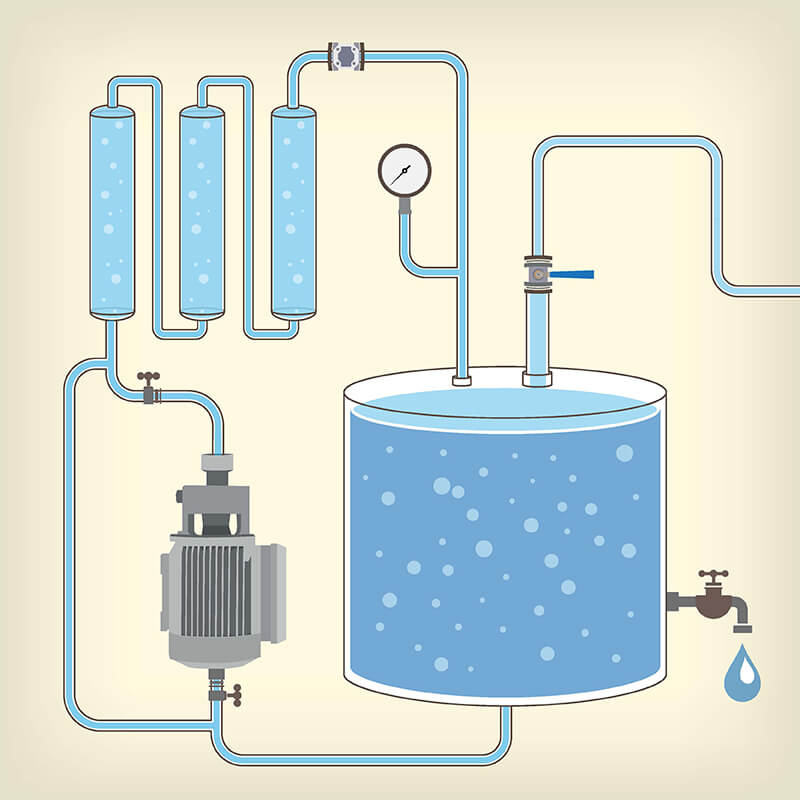
What is well liquid sensor (submersible or thread mounted)
A well liquid sensor, also known as a submersible liquid level sensor, is designed specifically for measuring liquid levels in wells, tanks, or other similar environments where the sensor needs to be submerged in the liquid. These sensors are built to be waterproof and able to withstand the pressure exerted by the liquid column above them. The main difference between a well liquid sensor and other liquid pressure sensors is in their construction and intended use.
Here are some key details about well liquid sensors:
- Construction: Well liquid sensors are designed to be fully submersible, with a waterproof enclosure and sealed electrical connections. This construction ensures the sensor can withstand being submerged in liquid for extended periods without damage or malfunction.
- Depth measurement: Well liquid sensors are typically used to measure the depth or level of a liquid, such as water in a well, by converting the pressure exerted by the liquid column above the sensor into a depth or level measurement. This is done by factoring in the density of the liquid and the acceleration due to gravity.
- Media compatibility: Well liquid sensors must be compatible with the liquid they will be submerged in, whether it is fresh water, saltwater, or other types of liquids. The materials used in the sensor should be chosen to resist corrosion and other damage caused by the specific liquid.
- Installation: Since well liquid sensors are designed to be submerged in the liquid, their installation typically involves lowering the sensor into the well or tank and securing it at a specific depth. Some sensors may also come with integrated cables or attachments for easy installation and retrieval.
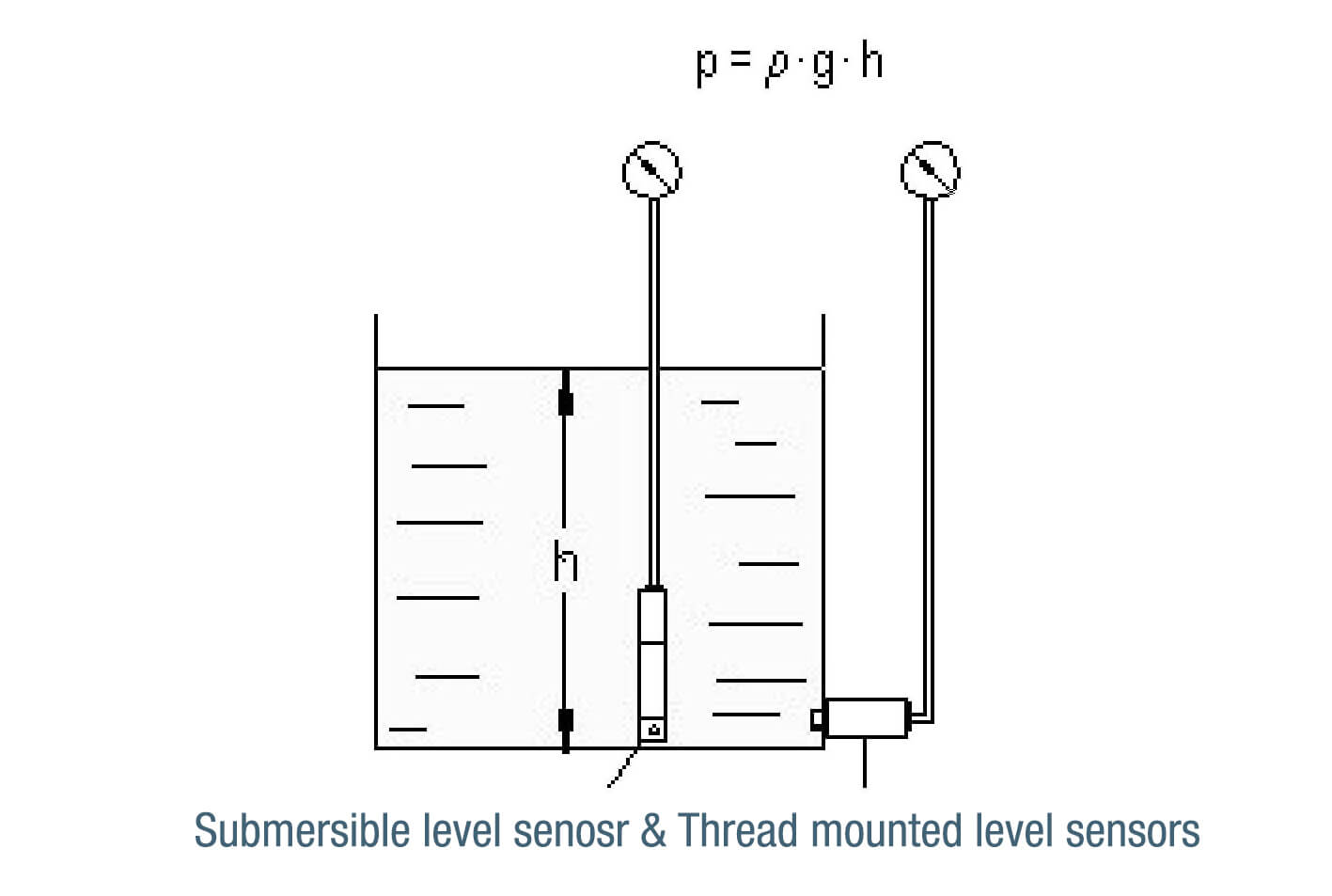
A submersible level probe is designed to be immersed in the liquid and typically installed directly into a tank, well or container, and sometimes, a submersible level probe is ideal for applications where the liquid is aggressive or corrosive, such as wastewater treatment plants, chemical processing plants, and oil and gas drilling operations if high accuracy and reliability accompanied with immersion in aggressive or corrosive liquids is the priority, submersible level probes may provide better results.
On the other hand, in many applications, thread-mounted level sensors are also widely used to attach externally to the tank or pipe and are mounted using a threaded connection. If your application requires a level measurement of liquids located above or below ground, up to 30 meters deep, a thread-mounted level sensor could be the ideal option, considering the relatively low cost and ease of installation.
What is the limitation and risk for Liquid pressure sensor
Limited pressure range: Each liquid pressure sensor has a specific pressure range, and using the sensor outside of this range may result in inaccurate measurements or sensor damage. For example, if a sensor has a range of 0-100 psi and is exposed to pressures of 150 psi, it may not provide accurate readings or could be damaged.
Temperature sensitivity:
Some liquid pressure sensors are sensitive to temperature changes, which can affect their accuracy. For example, a sensor with an accuracy of ±0.5% FS at 25°C might have an accuracy of ±1% FS at -20°C or 80°C. Choosing a sensor with a suitable temperature range and compensation for your application is essential.
Mechanical shock and vibration:
Some liquid pressure sensors may be sensitive to mechanical shock or vibration, which can affect their accuracy or cause damage. In applications with high levels of vibration or shock, such as heavy machinery or vehicles, it’s essential to choose a sensor designed to withstand these conditions.
Installation issues:
Incorrect installation, such as over-tightening, can cause damage to the sensor or affect its performance. For example, over-tightening a threaded sensor can result in a cracked diaphragm or a damaged pressure port, leading to inaccurate measurements or leaks.
Environmental factors:
Exposure to moisture, dust, or other contaminants can affect a liquid pressure sensor’s performance or lead to damage. Ensure that the sensor has appropriate protection for the environment in which it will be used. For instance, a sensor rated IP67 can withstand temporary immersion in water (up to 1 meter for 30 minutes), while a sensor rated IP65 is only dust-tight and can resist low-pressure water jets.
Electromagnetic interference (EMI):
Some liquid pressure sensors may be susceptible to EMI, which can affect their performance or cause measurement errors. In environments with strong electromagnetic fields or nearby high-current equipment, choosing a sensor with appropriate shielding or immunity to EMI is essential.

